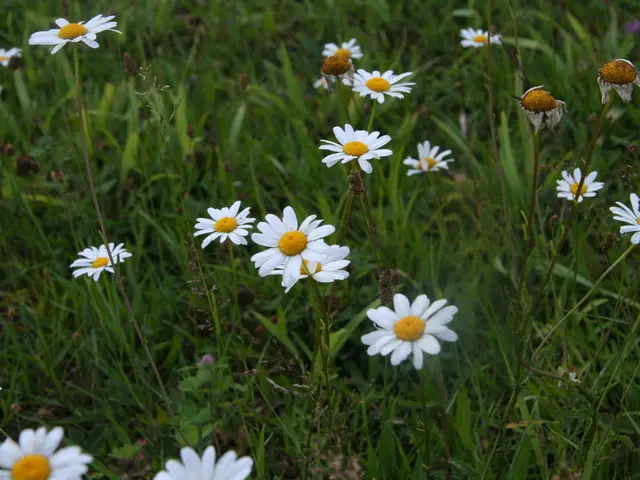Planting Mosquito-Repelling Vegetation in Your Dacha: Best Options for Halting Pesky Mosquitoes
Chase Away Pests Naturally: The Best Plants to Deter Bothersome Bugs
Got bug issues? Create a pest-free haven using lavender, mint, basil, garlic, rosemary, and citronella. These aromatic plants not only beautify your space but also repel insects without harmful chemicals. Here's a lowdown on these stinking sweet allies:
Herbal Repellents
Lavender - Make Mosquitoes Mistakably Absent
Lavender's strong scent is mosquitoes' kryptonite. Moreover, it's delightful for both your eyes and craft projects. Lavender thrives in sun and well-drained soil.
Mint - Swat Flies and Mosquitoes with a Strong Whiff
Mint, with its potent scent, discourages mosquitoes and ants. Although it grows rapidly, it's best to keep mint in containers to prevent it from overtaking your garden. Mint prefers partial shade and moist soil.
Basil - Your Personal Mosquito Whisperer
Basil's aroma repels mosquitoes and flies. It thrives in full sun and consistent moisture. Fresh basil leaves can even liven up your culinary creations!
Garlic - Keep the Creepy-Crawlies at Bay
Garlic does more than just season your foods; garlic plants repel various pests. It flourishes in full sun and well-drained soil, and harvesting is a bonus since garlic bulbs are edible.
Rosemary - The Wonderous Bug-Be-Gone Herb
Rosemary, with its woody aroma, is both aromatic and medicinal. It does best in full sun and well-drained, slightly acidic soil. Crushing or burning rosemary releases its bug-repelling oils.
Citronella (and Lemongrass) - Your Outdoor Bug Shield
Citronella grass (often confused with lemongrass) is lauded for its mosquito-repelling properties. Both plants contain citronella oil and prefer sunny, warm locations.
Garden Design Tips
- Arrangement: Taller and bushier plants should be positioned towards the back or center of your garden beds, so they don't shade smaller herbs. Mint, due to its invasive nature, should be planted in containers.
- Sunlight: All these plants favor full sun, except for mint, which does well with some shade.
- Soil: Ensure appropriate drainage for all plants. Amend soil with organic matter if necessary.
- Spacing: Give each plant room to grow without overcrowding to prevent disease and enhance air circulation.
Maintenance for Optimal Protection
- Pruning: Regularly prune or pinch back your plants to encourage bushiness and increased scent.
- Watering: Ensure consistent moisture for mint, basil, and garlic, while rosemary and lavender prefer drier conditions.
- Harvesting: Utilize leaves in your kitchen or homemade bug sprays. Crushed or bruised leaves release more of the bug-repelling oils.
Extra Insights
- Placement: Emplace repellent plants around seating areas, doorways, and windows for added protection.
- Companion Planting: Encourage these herbs to grow alongside vegetables for additional pest deterrence.
- Essential Oils: For extra protection, consider making DIY sprays with the leaves or essential oils of these plants.
In a nutshell, by strategically arranging and caring for these plants, you can set up a fragrant, picturesque, and naturally insect-repellent garden. Enjoy your peaceful oasis, bug-free!
Incorporate lavender, mint, basil, garlic, rosemary, and citronella (or lemongrass) into your home-and-garden lifestyle for both a charming home-and-garden feel and a pest-free lifestyle. By carefully arranging these plants in your garden, strategically positioning them around seating areas, doorways, and windows, and maintaining them properly, you can create a naturally repellent oasis that not only beautifies your space but also deters insects without the use of harmful chemicals.








